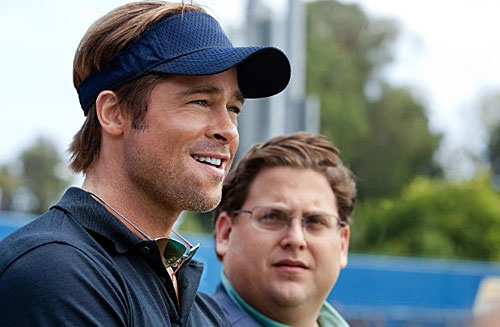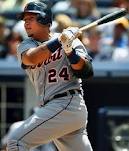
America loves baseball and statistics, either because or for each other. No sport, and by extension its players, is as defined by statistics as baseball.
We know baseball’s legendary and mythical numbers the way we know our family’s birthdays – 61 home runs, 56 game hitting streak, 20 wins a season, .400 average, and on and on.
These statistics have, for years, enabled instant comparison and valuation of players across generations.
At least that was the case until Billy Beane came along.
In his book “Moneyball,” author Michael Lewis tells the true story of the Oakland A’s general manager who questioned everything about how the baseball establishment had used, or misused, the game’s numbers. He operationalized a methodology, equal parts art and science, that allowed the A’s to reach the MLB playoffs five times between 2000 and 2006, despite having a payroll less than a third of the New York Yankees’.
Sabermetrics, the technical term for this craft practiced by Beane, redefined how and what baseball statistics really mattered. RBI’s were out; on base percentage was in. Defense independent earned run average (ERA), as opposed to straight ERA, was a truer measure of pitching performance.
The sabermetric movement aimed to prove that the baseball insiders’ (coaches, scouts, and general managers) dogmatic views actually disrespected the game. The sabermetricians were heretics who aimed to storm baseball’s most sacred temples.
No less interwoven in the American fabric is public education, an institution that has come to treat educational statistics with the same unquestioned reverence that the baseball establishment had previously viewed its own.
What can American public education learn from Beane and the sabermetricians?
Two camps of insiders dominate the dialog, agenda, and policy governing public education in America. The shouting match between them is drowning the voice of the camp that should matters the most. Parents, local communities, and even students are ironically the outsiders in public education.
The insiders perspective is valuable, but their agenda is overly governed by their political and financial interests. The first camp is the old guard education establishment, mostly public education employees – teachers, administrators and the like. The second is the self-styled reformers, who seek change in how public education is funded, delivered and held accountable.
The reformers like to pretend they are the outsiders, but their fingerprints are all over current educational policy and practice. Charter, cyber schools, voucher programs, high-stakes testing are the fruits of their efforts. George W. Bush’s No Child Left Behind hard coded major planks of the reform movement in national law. You don’t get more inside than that.
Race to the Top is little more than a Democratic re-branding of NCLB. Both national political parties, equally under the influence of the reformer’s agenda, have genuflected to high-stakes testing as THE standard by which public education is held accountable.
The education establishment spends the majority of their time discrediting these measures, a defensiveness that allows the reformers the oversimplified, but largely accurate, charge that the other side wants nothing more than the status quo. The establishment has hurt its own cause by failing to advance their own accountability solutions to improve public education.
Is anyone happy with this? Neither of the only two voices at the table would declare American public education a success. They conveniently have each other to blame for any deficiencies. Academic and financial statistics are volleyed back and forth to refute the other’s positions. Standardized test scores are the most abused. And this takes us back to “Moneyball.”
Michael Lewis summed it up for baseball as nicely as we could the problem with current education accountability systems: “Conventional opinions about baseball players and baseball strategies had acquired the authority of fact.”
Standardized tests are to education what the once unquestioned statistics were to baseball before sabermetrics. The parallels are striking.
Bill James is considered the founding father of the sabermetric movement. Here is an anecdote he offers, with Michael Lewis’ commentary, on the problem with one conventional view of a long revered baseball statistic:
“I find it remarkable that, in listing offenses, the league [MLB] will list first – meaning best – not the team which scored the most runs, but the team with the highest batting average. It should be obvious that the purpose of an offense is not to compile a high batting average.” Because it was not obvious, at least to the people who ran baseball. James smelled a huge opportunity. How did runs score?
Conventional thinking equally plagues public education today. Standardized test results have become the primary focus, like RBI’s in baseball, eclipsing the actual purpose of the endeavor and accepted with the authority of fact.
In baseball, runs batted in are not the end goal; wins are. Test scores are not the ultimate goal in public education, but an all too simple measure of a broader end goal. The ultimate goal of public education is less clear than a win in baseball, but many policy makers and influencers don’t see it that way. The reform movement has placed greater emphasis on standardized tests (e.g. Top to Bottom rankings, Adequate Yearly Progress, and the “best” high schools as measured by who takes the most AP tests.)
Had he chosen to apply his sabermetric skills to education, Bill James could say of tests what he said to the baseball establishment, “The world needs another offensive rating system like Custer needed more Indians… What we really need is for the amateurs to clear the floor.”
Lewis himself adds, “What was true about baseball was true about other spheres of American public life… The only sensible approach was to drop the pretense and embrace one’s status as an outsider… It wasn’t that it was better to be an outsider; it was necessary.”
The outsiders in public education today are the very people the institutions were designed to serve – parents, families, and local communities.
Parents and community leaders should embrace the outsider’s role and shed the dogma of the insider camps. They should begin anew with the question: What is the ultimate goal of our investment in public education?
Goals must be defined so programs are developed to achieve them, then staffed and funded. Accountability systems follow to assess program and policy efficacy against the agreed upon goals.
The outsiders must also embrace the reality that investment in public education is so significant, the highest expense of nearly every state’s combined state and local budgets, that accountability is a political necessity. It is simply irrational to try to dodge the issue.

Standardized tests are likely to remain, to some extent, a necessary evil given state and national law as well as college acceptance criteria. But sabermetricians would scoff at the notion of placing such value on a data sample so small – a single test, given once a year is like Miguel Cabrera being evaluated on his performance in a single exhibition game.
Sabermetricians do not refute the importance of numeric measures, but that the wrong measures were lionized at the expense of more informative statistics. The same condition exists in public education.
Dozens of means exist to measure educational program effectiveness organically. Over 180 school days our students participate in class, receive grades, create projects, write papers, take tests, apply to colleges, enroll in courses and extracurricular activities. All of these and more represent a treasure trove of data we can use to measure performance and trend results in ways that can inform our strategy to make our programs better.
Teachers, principals and staff of all type are also a major element of this endeavor. A constructive means of assessing their performance, with an eye towards improving their craft and effectiveness, represents another set of data points.
Finally, the outsiders themselves require self-assessment. Parental participation in this process is as significant as any other factor. To have any credibility, parents and families need to hold themselves to the same high standards as we hold our children, teachers and other stakeholders. Community, teacher, parent and even student surveys, scientifically executed, should be another important measure.
Local control has been the hot topic of late, as the policy debate between insiders only further marginalizes the local community’s voice. If local communities fail to accept the burden of defining their goals and establishing the required accountability systems, they frankly forfeit their right for local governance. It should be that way.
But the opportunity exists for us, as one of those communities, to take the lead and, as James said, clear the amateurs from the floor, embrace our role as outsiders, and demonstrate to state and national policy makers that we know what we want from our investment in public education and are taking our responsibility seriously for all the right reasons.